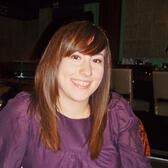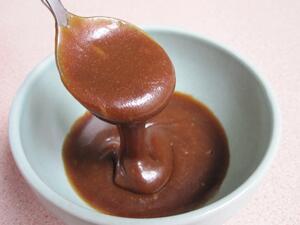Eating Jewish: Caramels from Baden -- A way to remember
Talking about food, about the recipes that we’ve tried and recipes that we want to try is often a topic of conversation when I’m with my family and friends. It allows us to share recipes for dishes that we’ve enjoyed and those that we think others would also enjoy. It gives us the opportunity to learn about new dishes or about new ways to make ones that we’ve previously tried. We get to share the stories that go along with the dishes, while at the same time allowing us to connect to our cultural and religious identities. These discussions can also take us back to the meals at which these dishes were served and allow us to imagine future meals at which we would like to prepare these dishes.
This practice of discussing food is something that has been done by many generations of women, living in various places, under various conditions. In most cases such discussions are not written down for preservation, however for one group of women living during the Holocaust, this is exactly what was done. The recipes preserved were those discussed and written down by women in the Theresienstadt concentration camp, and have been made available to us through the cookbook, In Memory’s Kitchen. This cookbook began as a manuscript in which various women wrote down recipes they would have prepared prior to entering the concentration camp and included such things as Zwetschken Strudel, plum strudel; Leberknödel, liver dumplings; and Gulasch mit Nudeln, goulash with noodles. It was one of these women, Mina Pätcher, who ensured the manuscript’s survival by passing it on to her daughter. Before Mina Pätcher died, she entrusted the manuscript to her friend Arthur Buxbaum, whom she asked to get it to her daughter Anny Stern in Palestine. It was only twenty-five years later, after passing through various hands, that the manuscript finally reached Anny Stern, who was living in New York at the time.
The journey that this cookbook has taken in order to appear in its present form is incredible, but even more astonishing is the fact that these women were able to discuss and preserve these recipes while living in the appalling conditions of a concentration camp. It was while these women had little or nothing to eat that they chose to create this manuscript, which can ultimately be seen as an act of resistance and as Cara De Silva writes in the introduction to the cookbook, “a forceful testimony to the power of food to sustain us, not just physically but spiritually.” The recipes in this cookbook can also be seen as weapons against the destruction of the identities of these women and their families, for they made up a key component of who they were.
In many cases, the recipes that are now in this cookbook would have been lost had they not been written down, thus making them important pieces of Jewish culinary history. The recipes have been reproduced in the original way that they were first written down by the women, without the many directions that we are used to. These women would have learned to make these dishes by simply preparing them over and over again without a recipe to consult.
Despite being slightly nervous about not having clearly outlined instructions, I chose to try making the recipe entitled "Caramels from Baden," which produced a delicious caramel that isn’t too sweet with a deep nutty flavor that comes from the addition of coffee. It would be perfect drizzled over ice cream, fruits or even brownies. Although my caramel came out softer than what the recipe explains it should be (cooking it for 30 to 40 minutes over a medium low flame would probably allow the caramel to become thicker), I think the result still evoked the character of the original recipe.
This recipe, along with the others contained in this cookbook, are testaments to the spirit of the Jewish women who wrote them and making these caramels is another way to pay tribute and remember them.
Caramels from Baden
From In Memory’s Kitchen
This is the recipe as it was originally written:
Brown [caramelize] 30 decagrams sugar without water. Pour in 1/3 liter coffee extract [very strong coffee], 1/8 liter cream and bring it to a boil. Add 8 decagrams tea butter [best quality butter] and cook until mixture is thick. Pour boiling into a buttered candy pan. With the back of a knife divide it before it completely cools. Then break it into cubes and wrap in parchment and also pink paper.
Here are the ingredients converted into more generally used measurements:
1 1/3 cups sugar
1 cup coffee
4.39 ounces heavy cream
6 tablespoons butter







